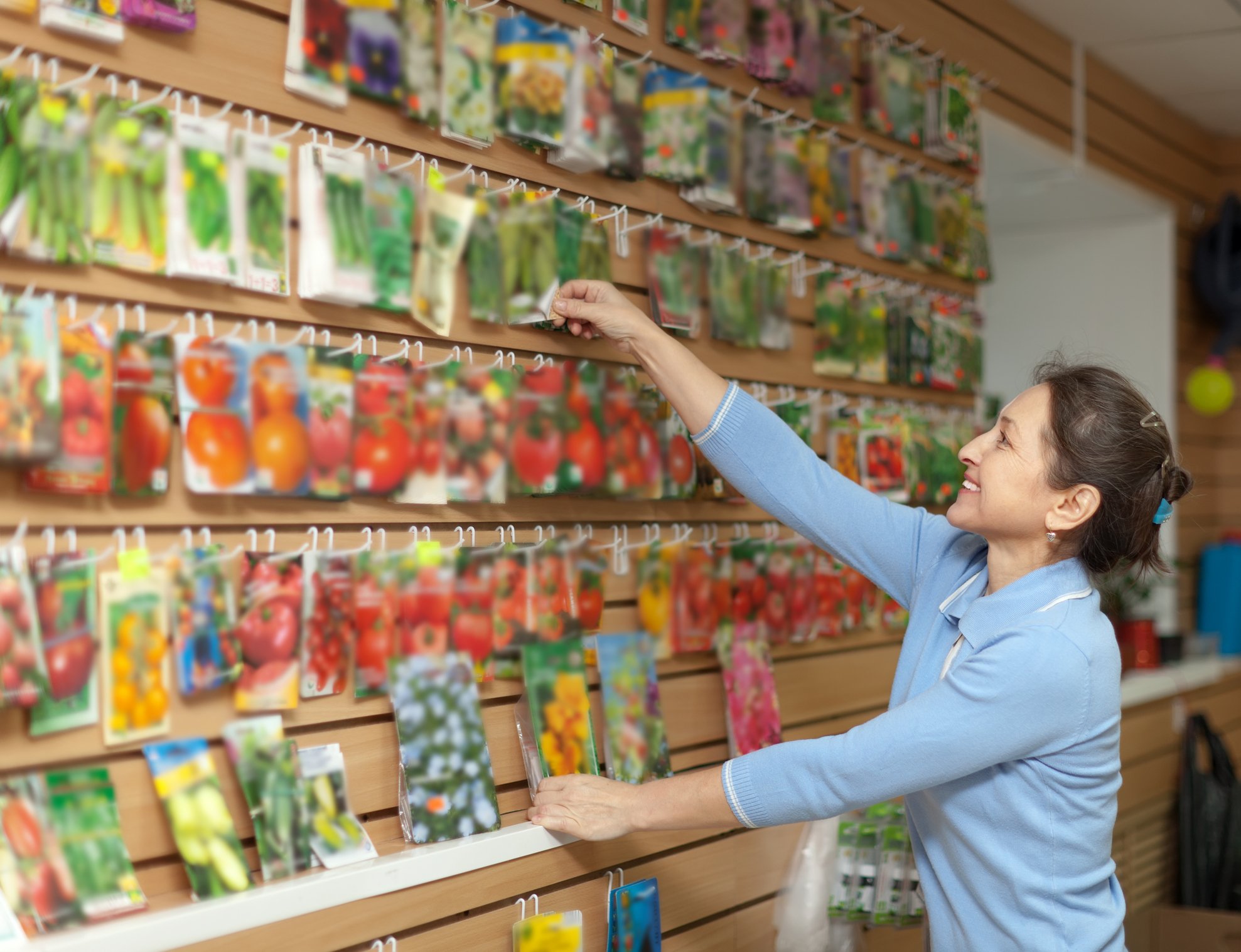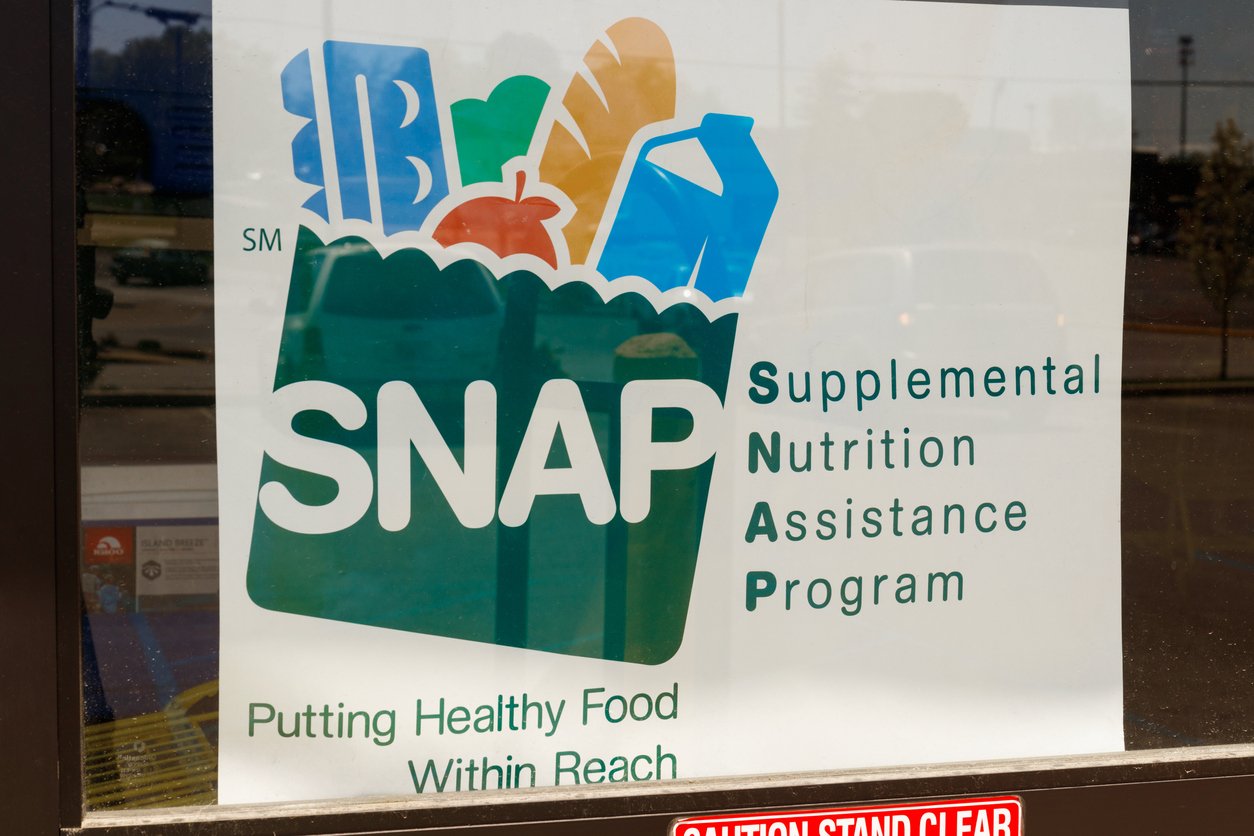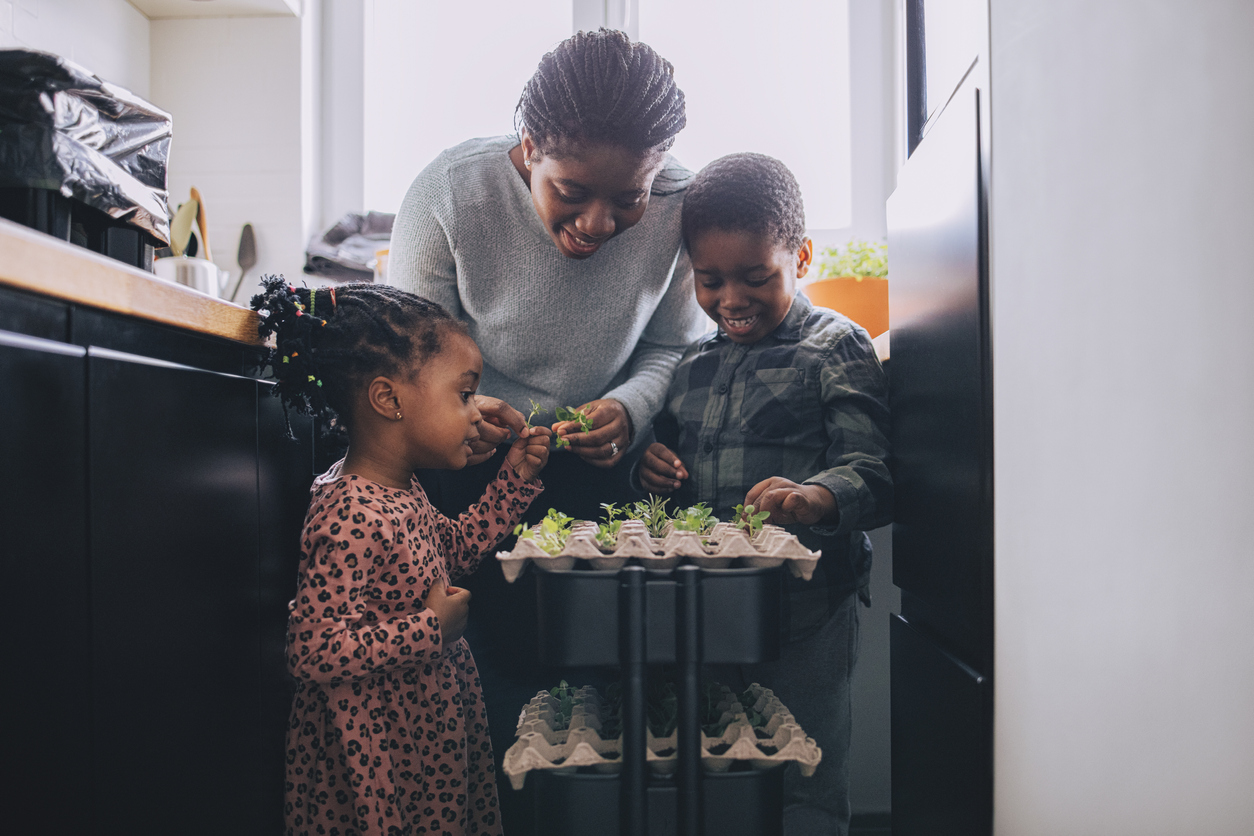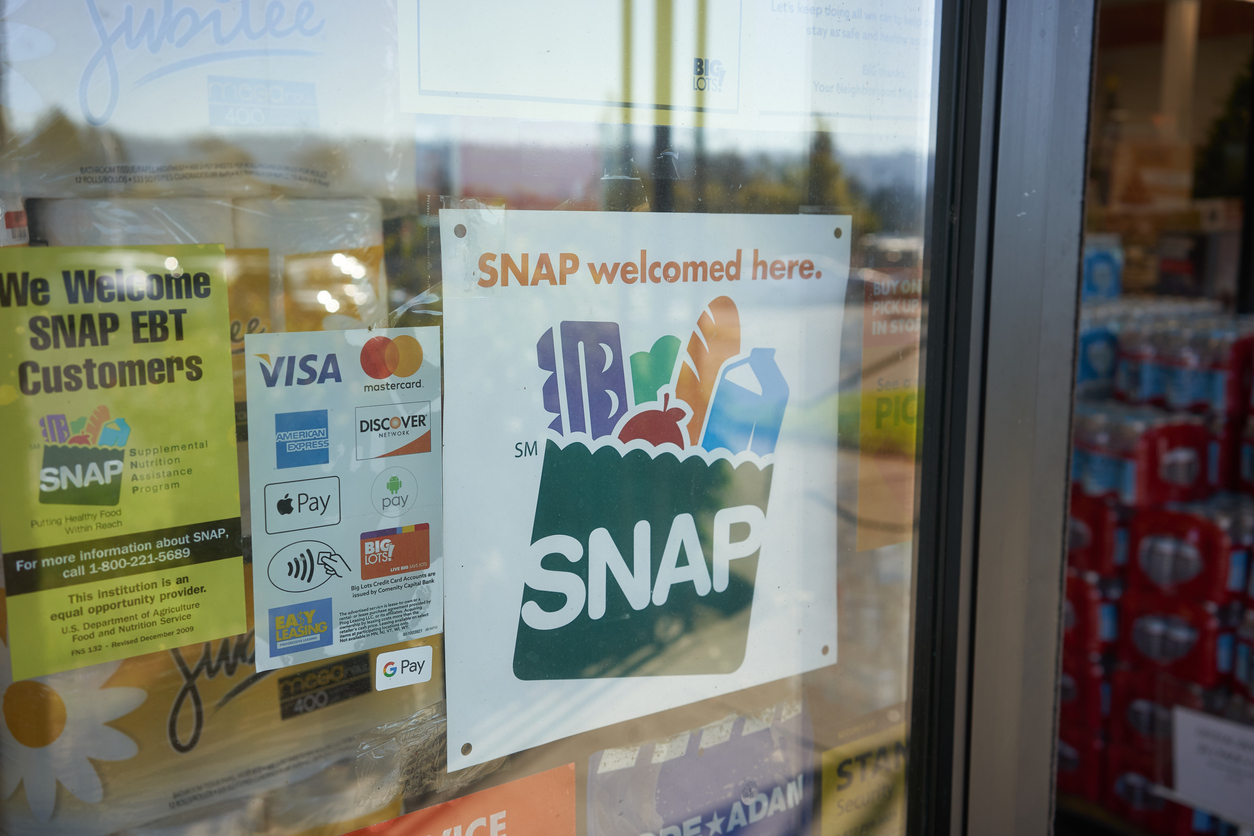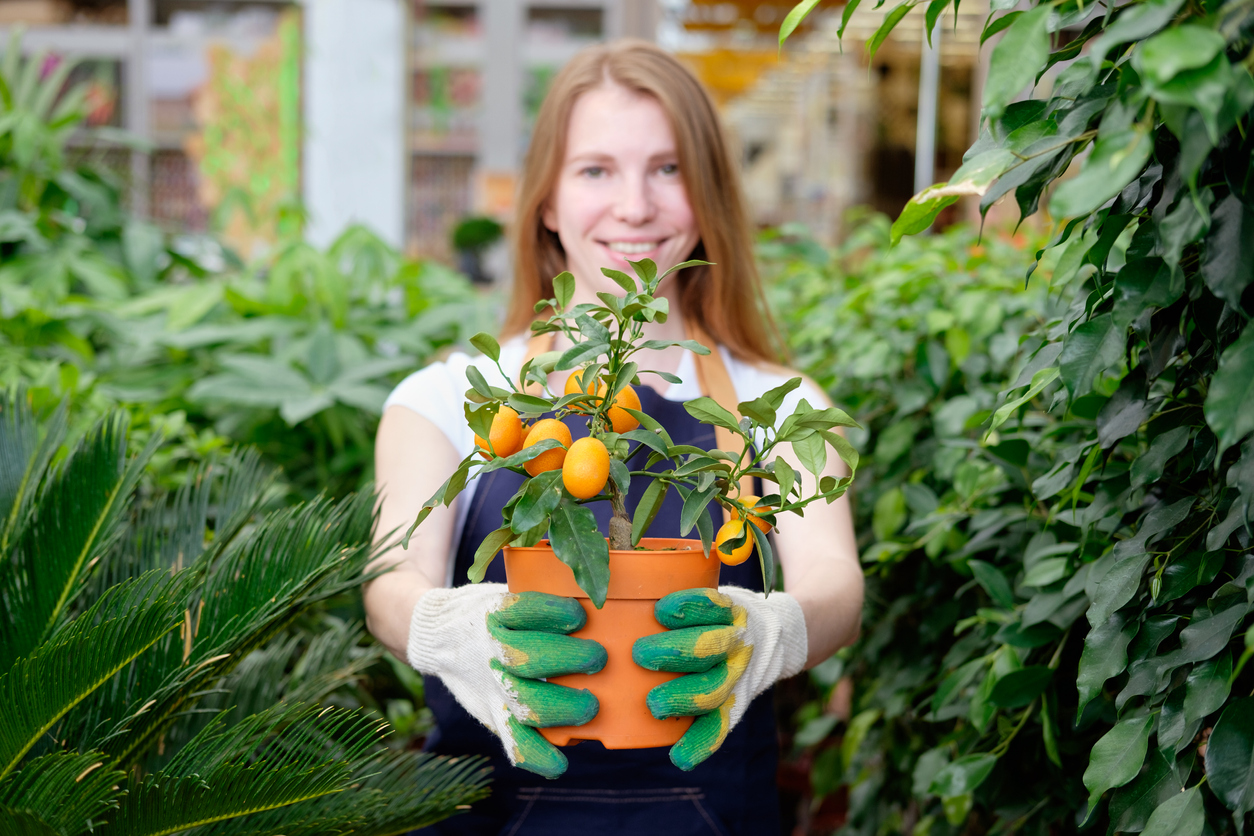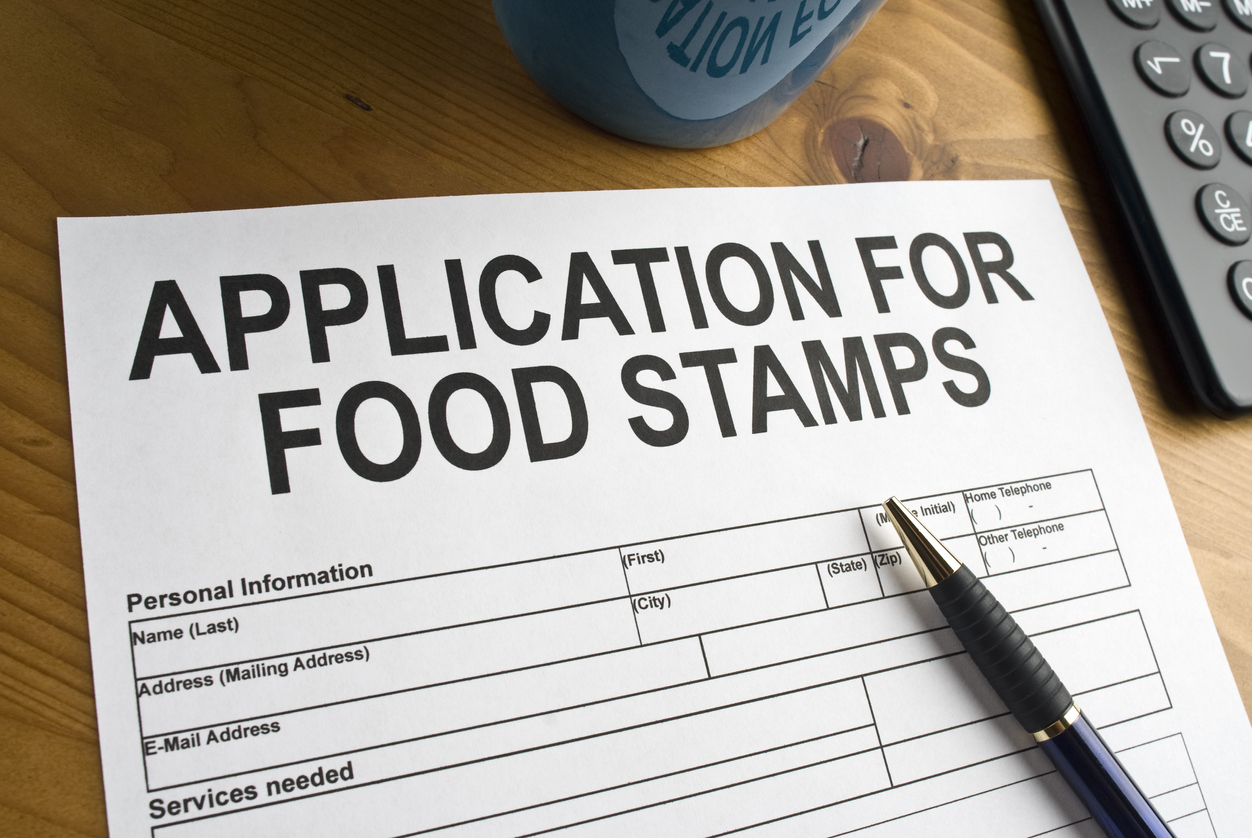One of the devastating hallmarks of poverty is unequal access to food, particularly nutritious food. In the US, fast and processed foods are more readily available in low-income areas than fresh, whole foods, leading to gripping health inequality in poverty-stricken areas. Nearly 12% of the US population — roughly 38 million people — live in poverty. But many more people are suffering from persistent food insecurity.
Since food is a necessity, the line item for groceries is not an optional expense. But households in the lowest income quintile end up spending over 30% of their income on food, compared to the highest income quintile which only spends about 8%.
As a result, people living at or near the poverty line often have to rely on food banks or food pantries. While these programs are a lifeline, they don’t all have the ability to offer fresh, healthy food. That’s where SNAP comes in.
SNAP, or the Supplemental Nutrition Assistance Program, allows recipients to spend government benefits on a variety of foods, including fresh produce. However, aside from food, one of the little-known benefits of SNAP is the ability to buy seeds and plants with an EBT card (Electronic Benefits Transfer) to grow your own food.
Unfortunately, very few SNAP recipients are aware of this ruling, and there are significant obstacles to getting retailers to participate and accept EBT for those purchases.
But with an increase in food shortages and supply disruptions, the ability to grow your own food is a worthwhile one to pursue, no matter what your income.
In this article, I’ll share a brief overview of how to take advantage of SNAP benefits to buy seeds and plants, and how to navigate the challenges that might arise. I’ll also mention some additional resources for gardening on the cheap.
What Is SNAP?
SNAP is a US-based federal program that assists low-income individuals and families with purchasing food. SNAP benefits used to be referred to as “food stamps” (officially, the Food Stamp Program) until they were renamed as part of the 2008 Farm Bill to emphasize their intended function of providing an improvement in nutrition. Another reason they were renamed was that the program no longer uses stamps. Instead, participants are issued reloadable EBT debit cards to purchase food.
The program still has a long way to go on the nutrition front. Some of the eligible food items on SNAP include chips, candy, snack crackers, ice cream, and soft drinks. And given the stress of living in poverty, it’s completely understandable that people are drawn to inexpensive pleasures that don’t require a lot of preparation and that kids will reliably consume without complaint.
But the intention of improving nutritional value is still present, with new initiatives and experiments bubbling up to achieve that aim. For example, at the moment, the USDA is experimenting with “Double Up Bucks” (a program available on a limited basis in 25 states in which the value of SNAP dollars doubles when used to purchase fruits and vegetables) and other programs to support health among low-income recipients.
Who Is Eligible for SNAP Benefits?
A household must meet certain requirements to be eligible for SNAP and receive benefits. These include income, assets, job or student status (for example, striking workers are not eligible), and household size. Benefits vary from full to partial.
SNAP is generally for people who are disabled and/or are living at, below, or up to double the federal poverty line. Each state has a slightly different application form and process to determine eligibility. In North Carolina, for example, a family of four can receive some SNAP assistance if their combined income is less than 200% of the poverty level; in this case $4,626 per month.
If you or someone you know may be eligible, you have to contact your local state office to apply. Here’s a link to find the one where you live: SNAP State Directory of Resources.
Why Garden Seeds and Plants are SNAP-Eligible
Since SNAP is meant to combat hunger, most of the items that are SNAP-eligible are what you’d expect: fruits and vegetables; meat, poultry, and fish; dairy products; bread and cereal grains; snack foods; and nonalcoholic beverages.
But here’s the thing: seeds and plants that can grow to produce food are also eligible under SNAP. This includes packets of garden seeds for fruits, vegetables, and other plant foods. Herb and spice plants are eligible, as well as edible roots (i.e., asparagus), bushes (like strawberry and other berry bushes), and bulbs (such as garlic, onions, and shallots). Excluded plants are those grown for decorative or ornamental purposes, or which are known to be toxic to humans (so daffodils, hemlock, and — the name is kind of a giveaway — deadly nightshade are all off the list).
It’s not a recent change, either. Seeds and plants became available to purchase with food stamps (now EBT) with the passing of the Agriculture and Consumer Protection Act of 1973. Here’s the verbiage from the amended Food Stamps Act:
“The term ‘food’ means any food or food product for home consumption except alcoholic beverages and tobacco and shall also include seeds and plants for use in gardens to produce food for the personal consumption of the eligible household.”
The amendment served at least three purposes: to supplement a household’s food budget, encourage healthier eating, and promote increased self-sufficiency.
The Benefits of Growing Your Own Food
In terms of budgeting, growing your own food is an investment that can save considerable amounts of money in the long run. Done frugally and strategically, every dollar spent on seeds and fertilizer can return up to $25 in fresh produce. And given that fresh fruits and vegetables are often the most expensive items in the grocery store, per calorie, growing them from scratch can make it more affordable for everyone to access a diversity of fresh fruits and vegetables.
Not only that, but millions of lower-income people live in “food deserts,” where access to fresh healthy food is either extremely inconvenient or nonexistent. Supermarket chains balk at locating in these areas. And smaller corner stores lack the infrastructure to source, store, and display fresh produce.
Tending a personal garden plot — or as Los Angeles “Gangsta Gardener” Ron Finley did, turning a sidewalk strip into a lush edible forest — can be a DIY way to bring healthy food into such neighborhoods.
Gardening can also deliver another economic boost: People who grow fruits and veggies tend to eat more fruits and veggies, and may therefore be healthier overall. Michael Pollan famously said, “Pay the grocer, or pay the doctor.” I’d like to add a third, even thriftier choice: Be the farmer.
Challenges Around Starting a SNAP Garden
Unfortunately, starting a SNAP garden isn’t exactly a snap. There are several obstacles you may face in using EBT to buy plants, seeds, and other gardening supplies.
Lack of Awareness About SNAP Benefits
The first problem is a lack of awareness: Most people don’t realize that seeds and plants are SNAP-eligible. Recipients don’t know, so they don’t add the seeds and plants to their carts. Retailers don’t know, so they don’t have systems to accept and process EBT payments.
The result of this lack of information is that the benefit is underutilized — to what extent we don’t know. The USDA Food and Nutrition Service doesn’t track SNAP-related spending on seeds and plant-bearing starts. The only clue in the data is a category called “miscellaneous” spending, which represents about 0.3% of total SNAP spending.
Lack of Knowledge About Gardening Itself
Another obstacle to using SNAP for gardening is that many people don’t even consider growing their own food as an option. If they’ve never gardened or farmed, they may have no idea how to start.
Like any skill, gardening requires instruction, practice, and patience to master. In the extensive SNAP-Ed online resource archive, there are no documents or videos on how to start a garden. There are several “eating from the garden” lessons, but they all focus on using existing gardens to teach kids how to eat healthfully. While this is definitely a worthwhile topic, it’s not the same as providing direction on starting and maintaining a garden.
One more issue: while seeds and plants are eligible under SNAP, most of the other things you need to create a garden — soil, containers, tools — are not. So people have to pay out of pocket for these necessities even before tasting their first sweet pea or spring radish.
Lack of Retailer Participation
The biggest obstacle has to do with which establishments allow shoppers to use EBT for seeds and plants. Retailers who accept EBT tend to be grocery stores and supermarkets, which often don’t sell garden-related items.
And the gardening and farm supply stores that do carry seeds and plants may not be allowed to accept EBT payments. By law, EBT-eligible stores must either carry a certain (pretty large) quantity of staple foods, some of which must be perishable; or the staple foods must generate at least 50% of their sales. Garden centers, where you’d commonly find seeds and plants, clearly don’t fit either criterion.
Whether or not you’re a SNAP participant, if you’d like to be part of the solution, you can help raise awareness by sharing this article with others who may use SNAP, requesting that food retailers sell seeds and accept EBT, or putting up posters from SNAP Gardens in community spaces and food retailers that let you.
Where Can You Buy Seeds and Plants with EBT?
While not all garden centers can accept SNAP, any establishment that does allow EBT payments may carry seeds and plants. So if your local supermarket, natural foods store, co-op, or big-box store sells them, you can purchase them using your SNAP benefits — theoretically.
Why theoretically? Because often, the store’s staff will not know that it’s possible, and may not have training on the procedures to allow customers to buy seeds and plants with EBT. To save time and effort, you can call ahead and talk to a manager, or even call the corporate headquarters (if applicable) and ask them to please verify that you can purchase those food-producing plants or seeds on the eligible food items list.
You can also check this interactive US map that lists retail locations that accept EBT. In addition to the establishments on that list, you may also be able to use SNAP benefits at small markets and farmers markets. You can check by clicking on the market’s listing in the USDA’s farmers market directory and looking under “Accepted Food and Nutrition Assistance Programs.”
As an added incentive to shop for garden stock at farmers markets, many of them participate in the Double Up Food Bucks program that allows you to get more produce for less if you have an EBT card.
You can also use EBT for seeds at some online retailers. Amazon, for example, allows EBT purchases for many types of seeds. You can shop via this link, or simply go to Amazon.com and enter “vegetable seeds EBT” in the search bar.
Other grocery stores, big-box stores, and markets that have online ordering may also be a possibility but not a guarantee.
Low-Cost Gardening Tips
Once you’ve acquired seeds and plants with EBT, you’re not out of the woods (or, better, into the garden) yet. You’ll still need gardening maintenance supplies (which are not covered by SNAP), time to garden, and container space or land on which to create a bed.
And while you can find many fancy and expensive items for hobbyist gardeners, you don’t have to spend up to the gills to get what you need. Thrift stores and dollar stores frequently carry low-cost gardening supplies and tools. Some garden centers also give away plastic containers, paint buckets, and other containers that you can repurpose for growing crops. (Make sure the buckets weren’t ever filled with toxic ingredients that you don’t want touching your soil.)
You can also get creative and repurpose many household goods into containers for plants. Some examples include gallon milk and water jugs, five-gallon buckets, and food containers.
If you don’t have land that’s suitable for a garden bed, consider starting a windowsill or kitchen herb garden, or a balcony container garden. You may also be able to get a free or inexpensive plot at a local community garden.
While bags of soil and soil amendments are not eligible for SNAP purchases, you may be able to make your own compost, given a bit of outdoor space and enough food scraps. If you don’t generate a lot on your own, you might be able to convince your neighbors to share their plant-based kitchen waste with you in exchange for a couple of tomatoes and heads of lettuce down the road. And some communities offer free compost to home gardeners.
For some fruits and vegetables, you may not even need to buy seeds at all. There are several types of produce that are pretty easy to regrow from food scraps and seeds.
If you need guidance on gardening, contact your state extension office and ask about their Seed to Supper (or similarly named) program in your state. Here’s one example from Oregon, another from Montana, and a third from Pennsylvania, which are all led by Master Gardeners.
And here are a couple of additional resources that you might find useful when learning to grow your own food: an article on locating and using a planting calendar, and a beginner’s guide to starting a food garden.
A Note About the Perceived Stigma of Relying on Government Assistance
Over 41.5 million people rely on SNAP for food assistance in the US. However, there’s often a stigma associated with receiving government assistance or “charity.”
And there’s not necessarily much correlation between economic status and work status — many employed people receive low hourly wages and meager benefits, or can only find part-time work. Walmart and McDonald’s, for example, employ tens of thousands of workers, many of them full-time employees, who still require the assistance of SNAP benefits.
Unfortunately, it’s more common than most people realize. Fully 60% of all US residents will experience at least one year below the poverty line, and three-quarters will live in either poverty or near poverty.
If you or anyone you love ever finds yourself amongst the majority of Americans in this regard, keep in mind that SNAP and other similar programs were created to make life a bit easier, and more livable, for the people who can use some support. As the song goes, “We all need somebody to lean on;” and sometimes, that “somebody” might be a program like SNAP.
But whether or not you or someone you know relies on SNAP to buy food (and now hopefully seeds and plants), there’s no shame in receiving some help to improve your quality of life or the health of your family.
Growing Food and Opportunity with SNAP
SNAP is a valuable lifeline for millions of people in the US, but many don’t know about or utilize one aspect: buying seeds and plants with EBT to grow your own food. Gardening can help save money and provide access to healthier food for low-income individuals.
But there are also challenges in taking advantage of this benefit due to a lack of knowledge or promotion about it. And many retailers either are not set up to accept EBT for seeds and plants or don’t know that they can. By utilizing the resources in this article, you can find places that will allow you to buy seeds and plants with EBT (if you use it), or spread the word about it in your community. And you can get started growing your own fresh and healthy food for a very low cost.
Tell us in the comments:
- Have you ever used SNAP to purchase seeds and plants for gardening?
- If so, what was your experience navigating the rules and regulations of the system?
- What are some of the easiest and least expensive items to grow in your part of the world?
Featured Image: iStock.com/JackF
